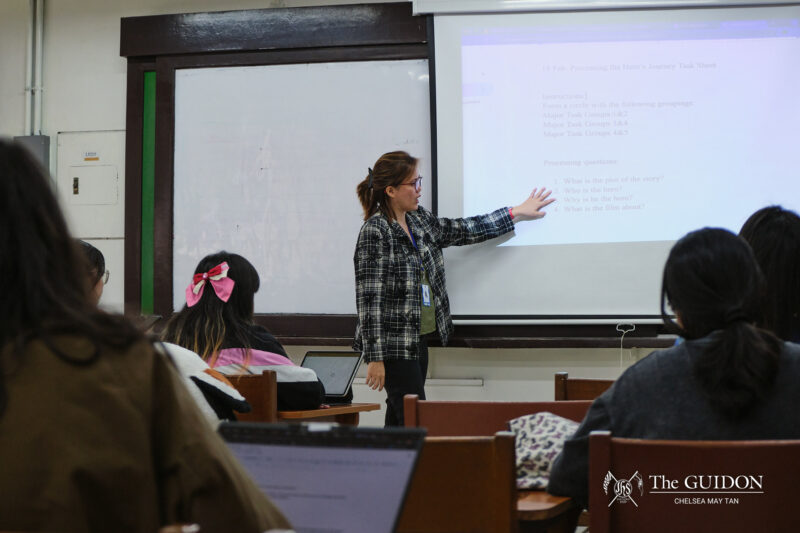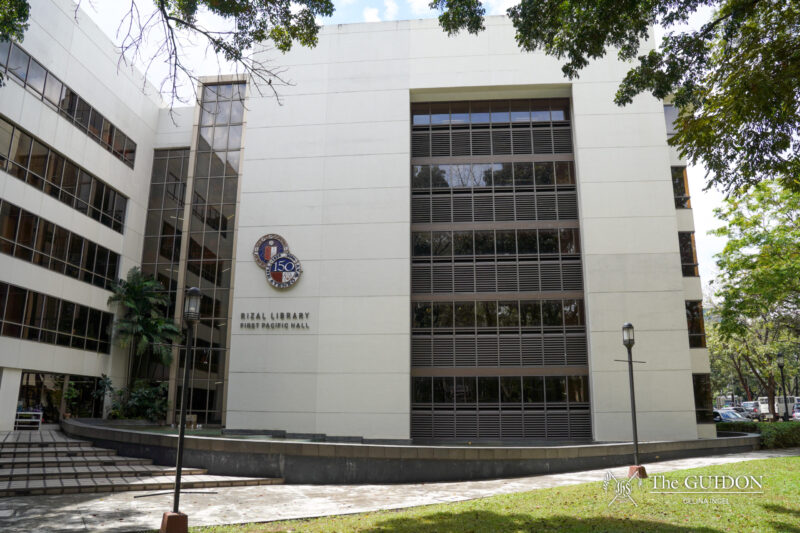Even the despot Marcos couldn’t keep the onslaught of the sixties at bay; it was such a nightmare for him, in fact, that he saw it fit to declare Martial Law just a few years into the seventies.
In the Ateneo, much of that tumultuous past—especially that tense period of social unrest immediately preceding military rule—is well encapsulated in the Atenean battle cry back then: “Filipinization!”
This term—something that would permeate Atenean discourse and rhetoric for many years—refers to the cultural and socio-political movement that would hold generations of Ateneans in thrall, and, in the process, leave a profound and lasting mark on the university.
Revolutionary
The Atenean drive towards Filipinization was almost inevitable. The Ateneo stood on Philippine soil and suckled Filipino students, and yet for the longest time, it remained an ‘American’ institution. The Ateneans of the ‘60s saw the school as an institution that was subservient to colonial interests, and existed only to serve the ‘oppressive power elite.’
Such an Ateneo was completely unacceptable to the students back then. As a result, the ‘Down from the Hill’ movement was born, inspired by a student manifesto of the same name.
But along with these Atenean efforts to engage the marginalized came the sweeping reforms that would forever change the school. Filipinization would see Fr. Francisco Araneta taking office as the first Filipino president of the Ateneo, Fr. Roque Ferriols trailblazing the path for philosophy in Filipino, Rolando Tinio establishing the university’s Filipino Department, and a lot of other milestones materializing right before Ateneans’ eyes.
Role of Filipino
One of the more concrete legacies brought about by Filipinization is the school’s decision to finally afford Filipino the recognition it deserves; the language was finally allowed to take its rightful place at the core of what it means to be Atenean.
Prior to Filipinization, for example, student creative work and journalism in Filipino were virtually nil. By 1965, however, the first Filipino works would appear in Heights. The publication would even change its name to Pugadlawin for a time, when Jose Ma. Sison served as guest editor.
The GUIDON would also publish issues in near-complete Filipino from the late ‘60s to the early ‘70s, culminating in its publication as Pandayan. That incarnation of The GUIDON would later on be banned under Martial Law.
Matanglawin, on the other hand, would be founded in 1975, as The GUIDON reappeared in a highly regulated form sanctioned by the military regime. The new publication would serve as an alternative avenue for student discourse, and is now Ateneo’s official student publication in Filipino.
‘Neo-colonial’
“It was a trailblazing thing—a great era for our university,” says Michael Pante, former Matanglawin Editor (2005-2006) and history professor at the Loyola Schools.
“The drive for Filipinization was also, in part, driven by the anti-Martial Law movement,” he says. “People then viewed the Marcos regime as a neo-colonial imposition, and so, one way of showing resent is to use Filipino.”
Such resent was shown in highly concretized ways back then. Rallies were common, and the work of the Sanggunian and the student publications further inspired the radicalized student body.
This inspiration would also drive Filipino to new heights in the university. Banking on the impetus brought about by Filipinization, groundbreaking artists would find their home in the Ateneo. Names such as Tinio and Bienvenido Lumbera would bring the school to the forefront of the national literary scene.
Kilusang Bagay, a distinctive literary movement with Tinio at the helm, would reach its peak in the Ateneo. It would later on be considered as one of the greatest legacies of that era in Philippine literature.
Ferriols, on the other hand, would pave the way for generations of Ateneans to philosophize in the native tongue.
According to Pante, the Filipinization movement would have lost its momentum by the late ‘80s. “Probably, it plateaued,” he says.
“In the ‘80s, ‘90s, there was no more Marcos,” Pante says. “Therefore, there was no progression [for Filipinization] afterwards.”
Filipino in the Ateneo
Jerry Respeto, current Chair of the Filipino Department, thinks otherwise. He explains that though progress might appear to have plateaued, it actually has not.
“In my opinion, it’s just not obvious,” he says in Filipino, “but we’re still making clear steps towards progress in this regard.”
Respeto believes that a proof for this is the number of Filipino units required for all Loyola Schools students. Even after the restructuring of the college around a decade ago, Filipino remained at a solid nine units for all students.
Research attests to an Ateneo edge in this aspect. Compared to that of other universities, Ateneo’s program in Filipino is indeed an intensive one. In UP, UST, and La Salle, students are required to take only six units of Filipino electives; in UP’s case, these units don’t even have to be instructed in Filipino.
On the other hand, in the Ateneo, nine units of Filipino is the bare minimum; twelve is required for students with a deficient background in the language.
Respeto is also happy to note the increasing number of students majoring and minoring in Filipino. Every year, for each year level, around five to ten people are minoring in Panitikang Filipino. Around ten people are currently majoring in the course.
“Considering that UP’s just there, that’s already a lot,” says Respeto.
Other fields
Still, while using Filipino for the humanities and the social sciences seems alright to most Ateneans, Fabian Dayrit, Dean of the School of Science and Engineering, cannot seem to say the same for the sciences.
“In principle, I’m not saying that I’m against it,” he says. “I just don’t recommend it. Sometimes, the terms are just too technical.”
Dayrit explains that such a situation could be very troublesome for teachers and students. Still, as a long-time science professor, Dayrit maintains that science instruction in Filipino can be viable. For him, basic science concepts can still be taught in Filipino, if done at an elementary level.
“Though greatly dependent on the sophistication of the subject,” he says, “it’s actually just a matter of effective communication.”
In the end, Dayrit emphasizes the primacy of the medium’s effectiveness, and looks at “what makes you communicate and understand best” as the major concern.
“Hindi ‘yung pilit. (Not what’s unnatural),” Dayrit says, on what he prefers for the medium of instruction.
Second nature
Despite the Ateneo’s great strides in the struggle for Filipinization, a lot of challenges remain. An article from The GUIDON dated March 2009, “Native tongue no more?”, showed how many Ateneans today are not even remotely interested in Filipino, a far cry from four decades ago when to be truly Atenean meant to be truly passionate about the language.
In the article, Joseph Salazar of the Filipino Department posited that this could be due to a lot of Ateneans’ “resentment of Filipino as a language and as a culture.” He says that this resentment may stem from the fact that these Ateneans desire to be a part of a particular “social grouping” or “social culture.” Salazar says that this desire hinders them from being familiar with what is really theirs.
Ironically, it is through the same Filipino curriculum reviled by some students that the university wishes to correct such a negative attitude towards Filipino.
Respeto says, for example, that one of the ways the Filipino Department acts on this is through allowing the students to read and analyze the various texts that present deeper and larger issues, the texts that would require critical thinking.
This critical thinking is something that the department seeks to cultivate, because it will lead to a better understanding of why Filipino is relevant and necessary.
“Eventually, [the students] can leave the texts, but the skill of critical thinking remains with them,” says Respeto.
For Pante, however, Filipino shouldn’t really have a clear-cut role; rather, it should be at the core, at the heart of every student. He believes that the use of Filipino, like the Filipinization movement, should be driven by inherent will.
“It shouldn’t even be something that you think and deliberate about,” he says. “It saddens me that we think of using Filipino this way, when as Filipinos, [Filipino] should be second nature.”
*With reports from Judito C. Tadeo
ERRATUM: A previous version of this article erroneously stated that Pacifico Ortiz, SJ was the first Filipino University President instead of Francisco Araneta, SJ. This article has since been edited accordingly. We apologize for this oversight.






